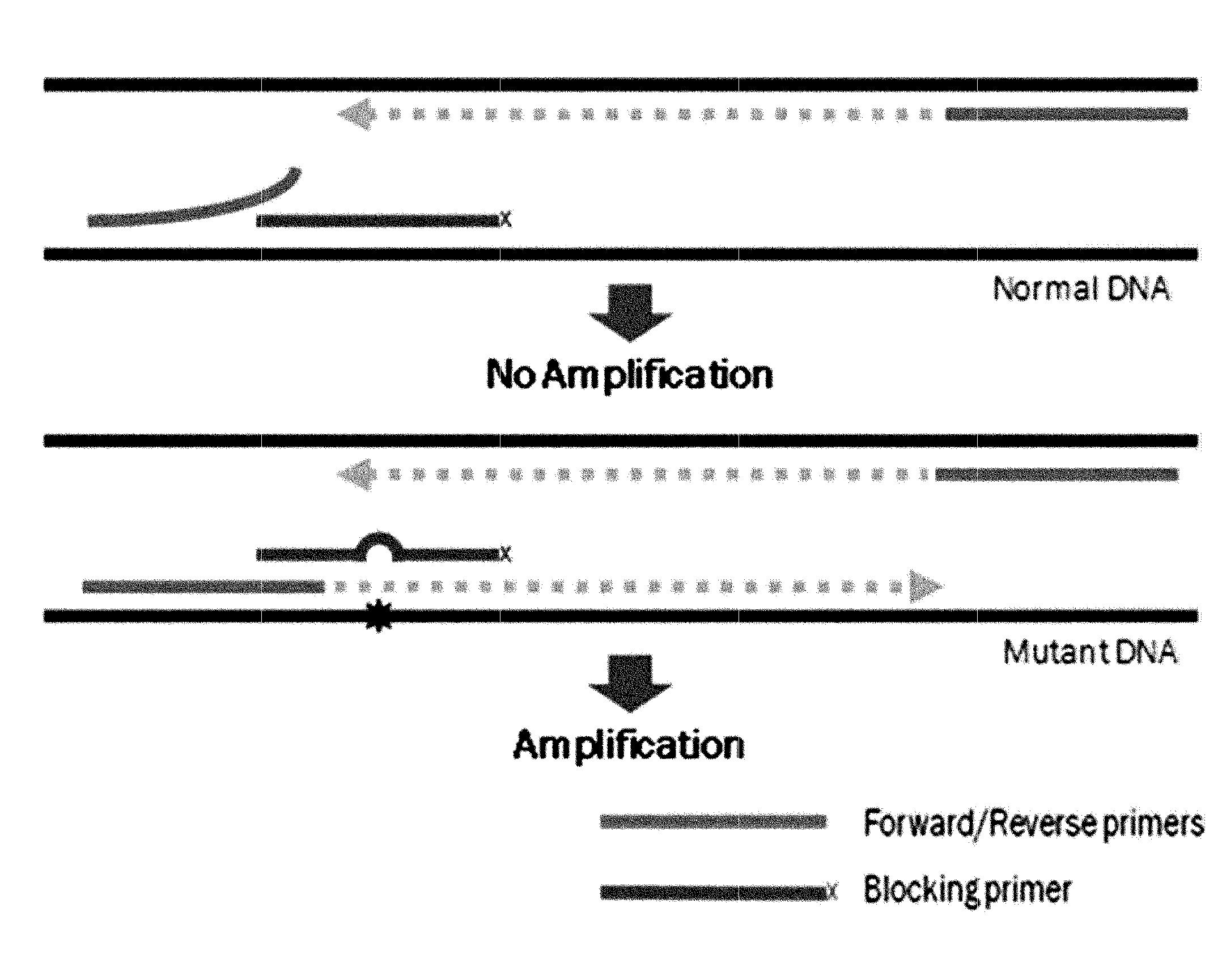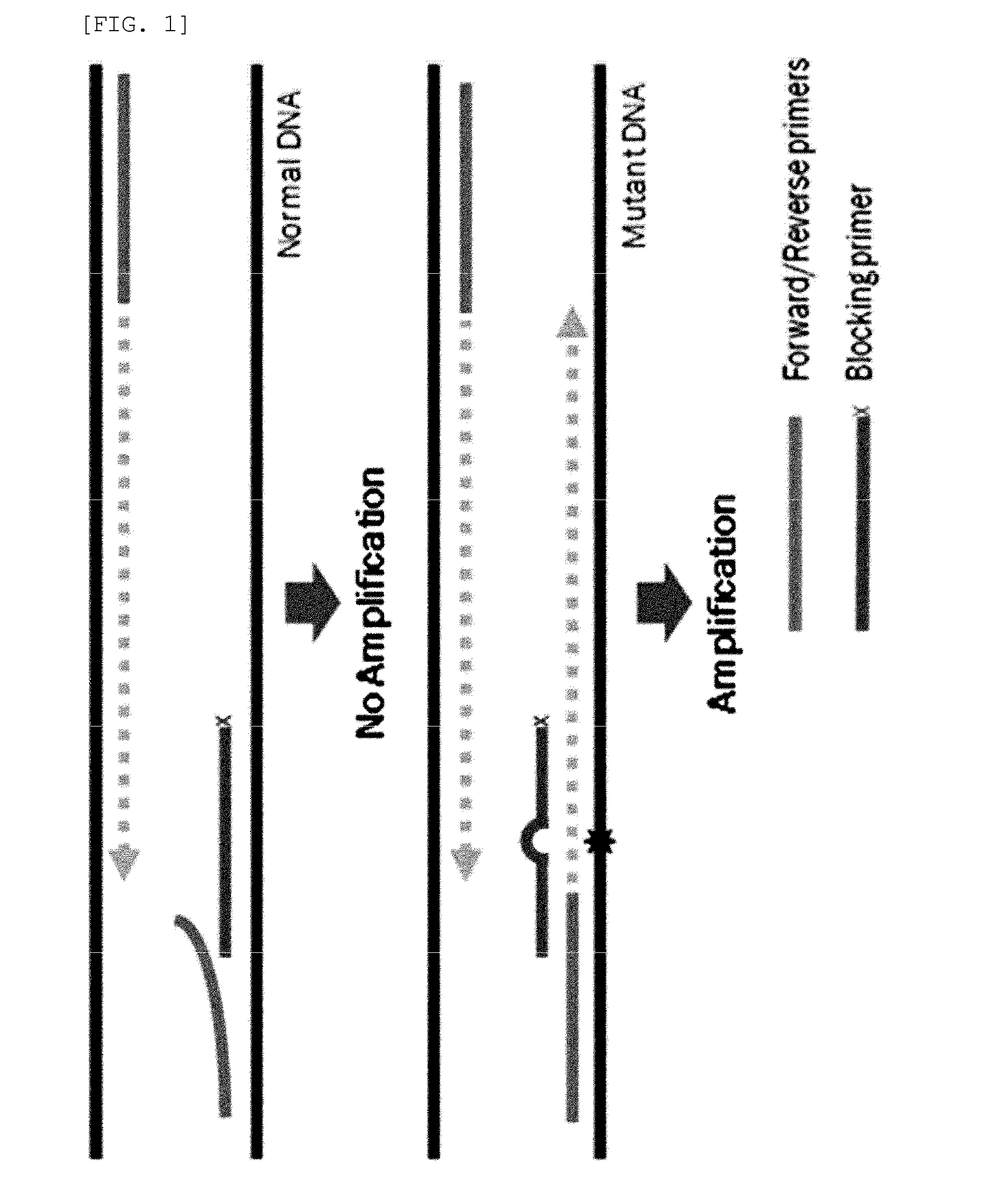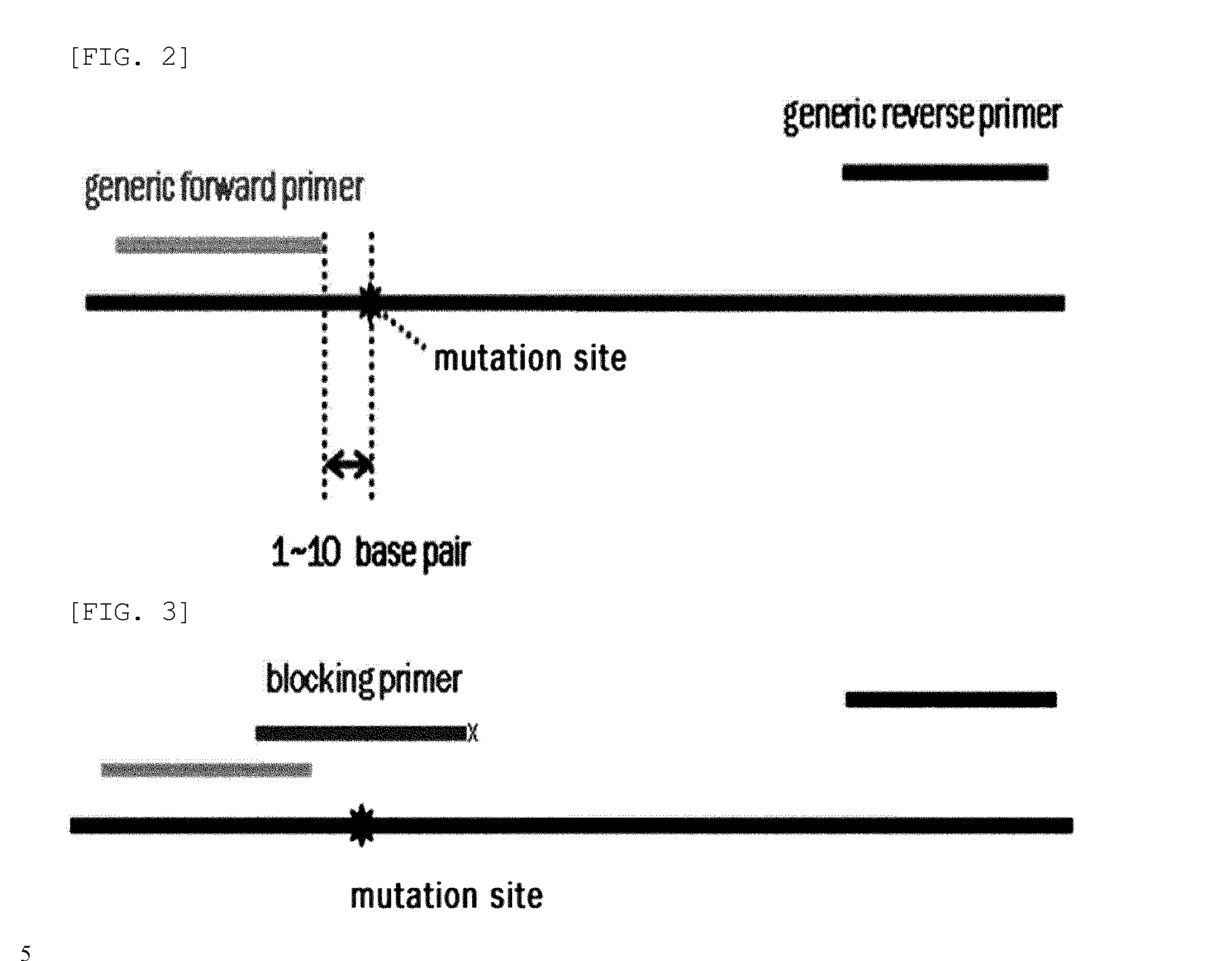Method for detecting genetic mutation by using a blocking primer
- Summary
- Abstract
- Description
- Claims
- Application Information
AI Technical Summary
Benefits of technology
Problems solved by technology
Method used
Image
Examples
example 1
Preparation of DNA Sample
[0100]Genomic DNA was extracted from cancer-derived cell lines (including HEL, JAK2 mutant cell line; Mia PaCa, KRAS mutant cell line; H1975, EGFR mutant cell line; SNU-790, BRAF mutant cell line; CCRF-CEM, Kasumi-1, MIA PaCa-2, H1975 and SNU-1196, TP53 mutant cell line; a bone marrow sample obtained from a patient, NPM1 mutant cell line; and all cell lines were purchased from the American Type Culture Collection or the Korean Cell Line Bank, except for an unpublished cell line with an EGFR T790M mutation, which was obtained from the Division of Hematology-Oncology, Department of Medicine at Samsung Medical Center) and from the peripheral blood of a normal person (29 years old healthy woman) using a High Pure PCR Template Preparation Kit (Roche) in the following manner. Each of 200 μl of the extracted samples was added with 200 μl of binding buffer (Roche Diagnostics, Mannheim, Germany) and 40 μl of protease K (Roche Diagnostics). The mixed sample was then i...
example 2
Construction and 3′ Modification of Blocking Primer
[0102]PCR amplification was performed using two generic primers (forward and reverse primers) and one blocking primer designed to encompass the target mutation site and to overlap with one of the generic primers. FIGS. 26 to 29 show generic primers and blocking primers used in the detection of EGFR, BRAF, JAK2, TP53, KRAS, NPM1 gene mutations. The 3′ end of each of the blocking primers was modified by the addition of a C3 spacer, a phosphate or a C6 amine (all from Bioneer, Korea). Each modification was tested for blocking efficiency. No significant differences in sensitivity were observed among the three modifications. Therefore, the C3 spacer modification was used in subsequence experiments.
example 3
Polymerase Chain Reaction (PCR) Amplification
[0103]The PCR reaction was performed using the DNA samples prepared in Example 1. The primers used in the PCR are listed in each of the Examples.
[0104]The 1 μl of DNA samples prepared in Example 1, 16 μl of sterile distilled water, 1 μl for each of the three primers, and AccuPower PCR Premix (Bioneer, Korea) were mixed together. The PCR was performed using this reaction mixture in the following cycling conditions (hereafter, same cycling conditions were used for detecting other mutations):
[0105][PCR Cycling Conditions][0106]95° C. for 5 minutes (1 cycle); and then[0107]50 cycles, each consisting of 30 seconds at 94° C., 30 seconds at 59° C., and 30 seconds at 72° C.; and then[0108]72° C. for 7 minutes (1 cycle).
[0109]After the amplification reaction, the amplicons were analyzed by electrophoresis to confirm the amplification was successful. First, the amplification products were treated using a Big Dye Terminator Cycle Sequencing Ready Re...
PUM
| Property | Measurement | Unit |
|---|---|---|
| Melting point | aaaaa | aaaaa |
| Melting point | aaaaa | aaaaa |
| Temperature | aaaaa | aaaaa |
Abstract
Description
Claims
Application Information
 Login to View More
Login to View More - R&D
- Intellectual Property
- Life Sciences
- Materials
- Tech Scout
- Unparalleled Data Quality
- Higher Quality Content
- 60% Fewer Hallucinations
Browse by: Latest US Patents, China's latest patents, Technical Efficacy Thesaurus, Application Domain, Technology Topic, Popular Technical Reports.
© 2025 PatSnap. All rights reserved.Legal|Privacy policy|Modern Slavery Act Transparency Statement|Sitemap|About US| Contact US: help@patsnap.com



